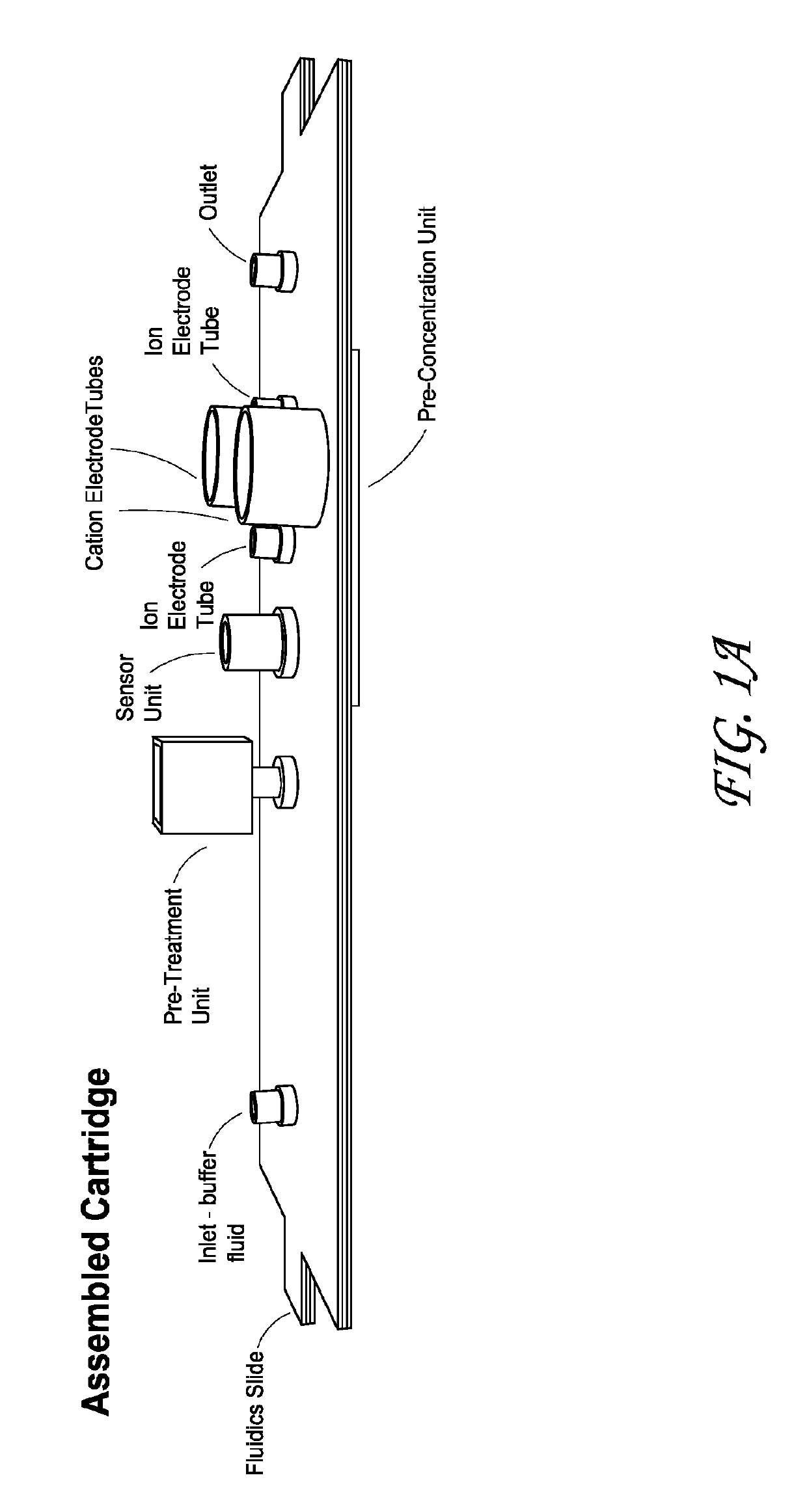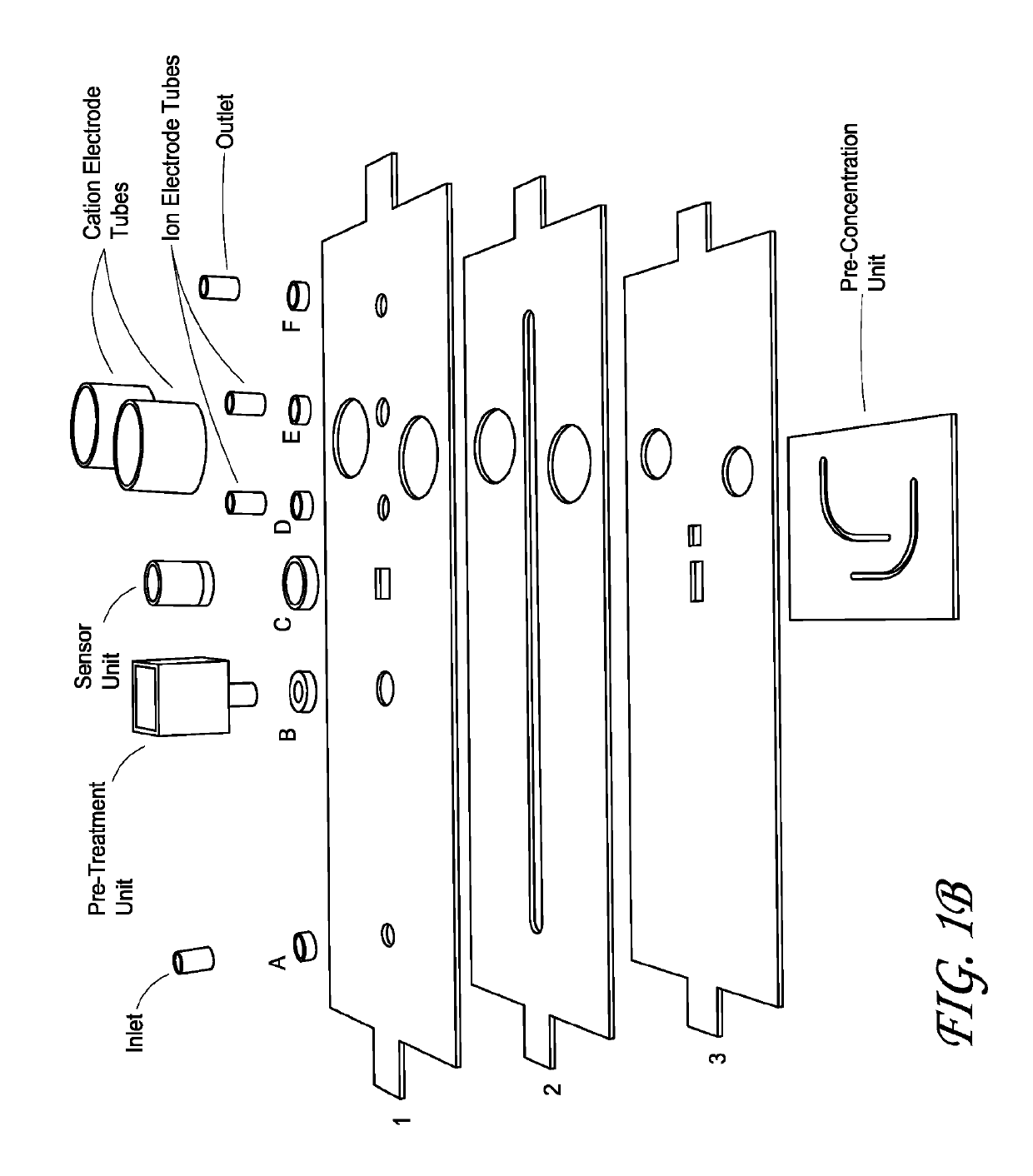Integrated membrane sensor for rapid molecular detection
a sensor and integrated technology, applied in the field of microfluidic membrane sensing technology, can solve the problems of limiting the usefulness of field applications, lack of actionable information, and inability to be used as early diagnostic markers, etc., to improve sensitivity, reduce assay cost, and improve sensitivity. the effect of time and stability
- Summary
- Abstract
- Description
- Claims
- Application Information
AI Technical Summary
Benefits of technology
Problems solved by technology
Method used
Image
Examples
examplei
ure of an Integrated Chip
[0155]In some embodiments of the integrated chip, the integrated chip comprises a reference electrode, a source electrode, a reservoir, an anion membrane, a resin, a photoreactive benzophenone-3,30,4,40-tetracarboxylic acid (powder)—1 mg (measured on scale) in 10 μL of DI water maintaining a pH of 6-7, sodium hydroxide—solid pellet (Fisher Scientific 500 gm). The integrated chip is fabricated comprising a sensor disc, wherein once the sensor disc is out of the mold, measure I-V curve (same step up as when experiment is run, must be identical), a reservoir, an assembled sensor disc & reservoir.
exampleii
lization of the Membrane
[0156]The membrane may be functionalized as described previously. A functionalization of the membrane may be performed prior to sensor disc step or after assembly of disc and reservoir, however, it is better to do so after because there are fewer chances of contamination afterward. The membrane may be carboxylated by: 1) Dissolving 1 mg powder photoreactive benzophenone 3,3,4,4 in 10 μL of DI water; 2) Adding dissolved sodium hydroxide to achieve a pH of 6-7 (roughly 2 μL); 3) Placing a drop onto the membrane, let sit for 5 minutes; 4) Exposing to UV for 10 minutes, atmosphere in UV box in nitrogen (efficiency of reaction will increase with the gas); 5) Put in DI water and shake it to wash membrane, can use equipment to assist with this like a vortex, vibrating, or rotating machine; 6) Repeat last three steps two more times; 7) Leave in 0.1×PBS overnight. This swells the membrane; 8) Measure I-V curve (same step up as when experiment is run, must be identical...
exampleiii
of the Target Probe
[0158]Attachment of the probe to the functionalized membrane may be achieved as described herein. Following the prior I-V curve measurement, soak sensor unit in pH 3 for one hour. Following the one hour incubation: 1) Wash with 0.1×PBS; 2) Wash membrane surface with MES buffer (mixed at pH 5.5) three times, can use vortex machine, rotator, etc. for assistance; 3) Add 0.19 mg of or final mixture amount of 0.4 molar, powder (refrigerated, did not get name of chemical b / c camera did not focus); 4) Other chemistry will work to allow bonding of probe; 5) Leave drop for 30 minutes on top of ‘dot’ membrane area; 6) Leave inside some moist box / chamber so sensor unit does not dry out during the 30 minutes; 7) Wash with MES buffer; 8) Apply DNA probe with NH21 group (needs clarification), DNA probe modified with amine group; 9) Generally use 1 micromolar concentration of that DNA group in 0.1×PBS; 10) Put in the moisture chamber and leave overnight; 11) Wash with 0.1×PBS; a...
PUM
| Property | Measurement | Unit |
|---|---|---|
| time | aaaaa | aaaaa |
| time | aaaaa | aaaaa |
| area | aaaaa | aaaaa |
Abstract
Description
Claims
Application Information
 Login to View More
Login to View More - R&D
- Intellectual Property
- Life Sciences
- Materials
- Tech Scout
- Unparalleled Data Quality
- Higher Quality Content
- 60% Fewer Hallucinations
Browse by: Latest US Patents, China's latest patents, Technical Efficacy Thesaurus, Application Domain, Technology Topic, Popular Technical Reports.
© 2025 PatSnap. All rights reserved.Legal|Privacy policy|Modern Slavery Act Transparency Statement|Sitemap|About US| Contact US: help@patsnap.com



